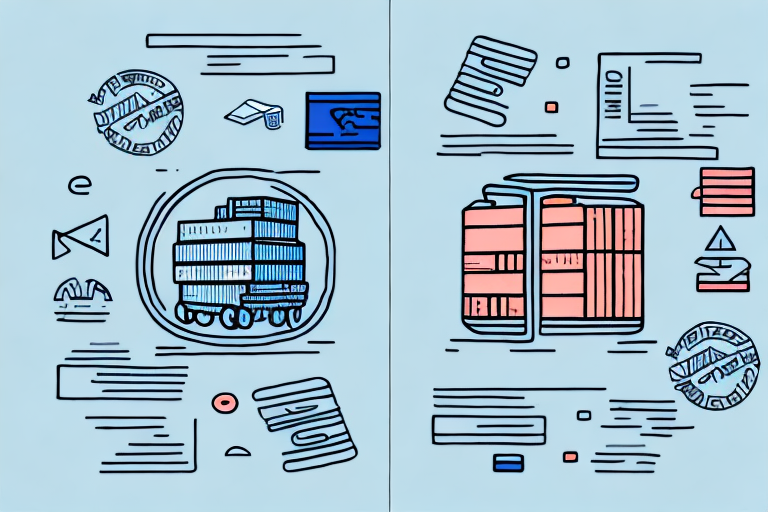What's the Difference Between Economy and Standard Shipping?
When it comes to shipping, businesses have a variety of options to choose from. Two of the most common are Economy Shipping and Standard Shipping. Understanding the differences between these options is crucial for making informed decisions that can impact your bottom line and customer satisfaction. In this article, we'll delve into the nuances of Economy and Standard Shipping to help you determine which is best suited for your business needs.
Why Understanding Shipping Options is Important for Your Business
Shipping is a critical component of any business operation. Whether you're dispatching products to customers or receiving supplies from vendors, knowing your shipping options can lead to significant cost savings, increased efficiency, and enhanced customer experiences.
- Cost Management: Choosing the right shipping method can help control expenses and maintain competitive pricing.
- Efficiency: Optimizing shipping processes can streamline operations and reduce delays.
- Customer Satisfaction: Reliable and timely deliveries foster trust and repeat business.
One key factor to consider is the speed of delivery. Faster shipping options are ideal for urgent orders but come at a higher cost. Conversely, slower methods like Economy Shipping can save money but may not be suitable for time-sensitive deliveries. Additionally, the reliability of the shipping carrier and their handling practices are essential to ensure packages arrive safely and on schedule.
Defining Economy Shipping: Low Cost, Long Transit Times
Economy Shipping is often the most affordable option available from carriers. It's tailored for businesses seeking cost-effective shipping solutions to keep their prices competitive.
Key Features of Economy Shipping
- Longer transit times, typically 5-10 business days
- Ground transportation methods
- Lower cost for large and heavy items
While transit times are longer compared to Standard Shipping, Economy Shipping remains a viable option for non-urgent shipments. It's ideal for businesses that handle bulk orders or ship oversized products, where higher shipping costs could significantly impact profitability.
Considerations for Economy Shipping
- Limited availability for certain destinations
- Restrictions on package size and weight
- Potential for delays or lost packages
It's advisable to consult with your carrier to understand specific restrictions and compare costs and transit times before deciding on Economy Shipping.
Defining Standard Shipping: Faster, More Reliable, Higher Cost
Standard Shipping offers a balance between speed and cost, making it a popular choice for businesses that require reliable and timely deliveries.
Key Features of Standard Shipping
- Faster transit times, typically 2-5 business days
- Enhanced tracking and reliability
- Insurance coverage for high-value items
Standard Shipping often includes comprehensive tracking features, allowing businesses to monitor shipments in real-time. This is particularly beneficial for time-sensitive or valuable shipments, providing peace of mind and reducing the risk of loss or damage.
Considerations for Standard Shipping
- Higher cost compared to Economy Shipping
- May not be cost-effective for non-urgent or bulk shipments
Businesses must weigh the benefits of faster and more reliable shipping against the additional costs to determine if Standard Shipping aligns with their operational needs.
Pros and Cons of Choosing Economy Shipping
Advantages
- Cost-Effective: Significantly lower shipping costs help maintain competitive pricing.
- Environmentally Friendly: Slower transportation methods can result in reduced carbon emissions.
Disadvantages
- Longer Delivery Times: Extended transit periods may lead to customer dissatisfaction.
- Potential for Delays: Higher risk of packages being lost or delayed.
While Economy Shipping offers substantial cost savings, the trade-off in delivery speed and reliability must be carefully considered to avoid negatively impacting customer satisfaction.
Pros and Cons of Choosing Standard Shipping
Advantages
- Faster Delivery: Quicker transit times enhance customer satisfaction.
- Reliable Tracking: Comprehensive tracking options improve shipment visibility.
- Insurance Coverage: Added protection for high-value or fragile items.
Disadvantages
- Higher Costs: Increased shipping fees can impact profit margins.
- Limited Cost Savings: May not be feasible for bulk or non-urgent shipments.
Standard Shipping is ideal for businesses that prioritize speed and reliability, but the associated costs require careful budgeting and consideration of shipment volumes.
When to Choose Economy Shipping: Tips for Making the Right Decision
- When targeting price-sensitive customers who prioritize cost over speed.
- For bulk or oversized shipments where economy rates provide significant savings.
- When shipping non-urgent items that do not require expedited delivery.
Businesses should assess their customer base and product types to determine if Economy Shipping aligns with their operational and financial goals. Additionally, consider implementing reliable tracking options to mitigate potential delays and maintain customer trust.
When to Choose Standard Shipping: Tips for Making the Right Decision
- For time-sensitive orders that need to be delivered promptly.
- When shipping high-value or fragile items that require additional protection.
- To enhance customer satisfaction through reliable and predictable delivery times.
Standard Shipping is well-suited for businesses that value speed and reliability, especially those dealing with high-stakes shipments. Balancing the higher costs with the benefits of faster delivery can lead to increased customer loyalty and repeat business.
How to Calculate Shipping Costs for Both Options
Accurately calculating shipping costs involves several factors:
- Package Weight and Size: Heavier and larger packages incur higher shipping fees.
- Destination: Shipping to remote or international locations may increase costs.
- Carrier Fees: Different carriers have varying rate structures and discounts.
Most carriers provide online calculators to help estimate shipping costs. Additionally, businesses can contact carriers directly for personalized quotes and explore bulk shipping discounts or negotiate rates based on shipment volumes.
Understanding Delivery Timeframes: How Long Will Your Shipment Take?
Delivery timeframes vary between Economy and Standard Shipping:
- Economy Shipping: Typically 5-10 business days
- Standard Shipping: Typically 2-5 business days
However, actual delivery times can be influenced by factors such as destination, carrier performance, weather conditions, and holidays. It's advisable to regularly track shipments and communicate with customers about potential delays to maintain transparency and trust.
Tips for Reducing Shipping Costs without Sacrificing Quality
- Use Shipping Software: Leverage shipping software to compare rates across multiple carriers and find the best deals.
- Optimize Packaging: Utilize appropriately sized packaging to minimize dimensional weight charges and reduce material costs.
- Consolidate Shipments: Combine multiple orders into a single shipment to take advantage of bulk shipping rates.
- Negotiate with Carriers: Establish relationships with carriers to secure discounted rates based on shipping volume.
- Plan Ahead: Avoid rush shipping by planning shipments in advance, reducing the need for expedited and more expensive shipping options.
Implementing these strategies can help businesses manage shipping expenses effectively while maintaining high service quality.
Factors That Affect Shipping Speed and Price
Several variables can influence shipping speed and cost:
- Distance: Longer distances typically result in higher costs and longer transit times.
- Shipping Volume: Higher shipment volumes can lead to bulk discounts.
- Package Weight and Size: Larger and heavier packages cost more to ship.
- Carrier Capacity: Carrier availability and capacity can affect both speed and cost.
- Shipping Method: The chosen shipping option (Economy vs. Standard) directly impacts both price and speed.
Understanding these factors allows businesses to strategize their shipping practices effectively, balancing cost with delivery expectations.
The Importance of Tracking Your Shipments: Benefits and Options
Tracking shipments offers numerous benefits for both businesses and customers:
- Real-Time Visibility: Monitor the progress of shipments to anticipate and address delays.
- Enhanced Customer Experience: Provide customers with tracking information to increase transparency and trust.
- Loss Prevention: Reduce the risk of lost packages by keeping tabs on their journey.
Most carriers offer tracking services as part of their shipping options. Investing in advanced tracking solutions can further enhance shipment visibility and provide valuable insights into delivery performance.
How to Choose the Best Shipping Option for Your Business Needs
Selecting the optimal shipping method requires a comprehensive evaluation of several factors:
- Cost: Assess your budget and determine how much you can allocate to shipping.
- Speed: Identify how quickly your products need to reach customers.
- Reliability: Choose carriers known for dependable service to maintain your reputation.
- Customer Expectations: Align your shipping options with what your customers value most.
By carefully considering these aspects, businesses can select a shipping strategy that aligns with their operational goals and enhances overall performance.
Conclusion: Making an Informed Decision About Your Shipping Strategy
Deciding between Economy Shipping and Standard Shipping is a pivotal choice for businesses aiming to optimize their logistics. By comprehensively understanding the differences, evaluating costs and delivery times, and considering customer expectations, businesses can craft a shipping strategy that balances efficiency, cost-effectiveness, and customer satisfaction. Leveraging the right shipping options not only streamlines operations but also fosters trust and loyalty among your customer base.




















